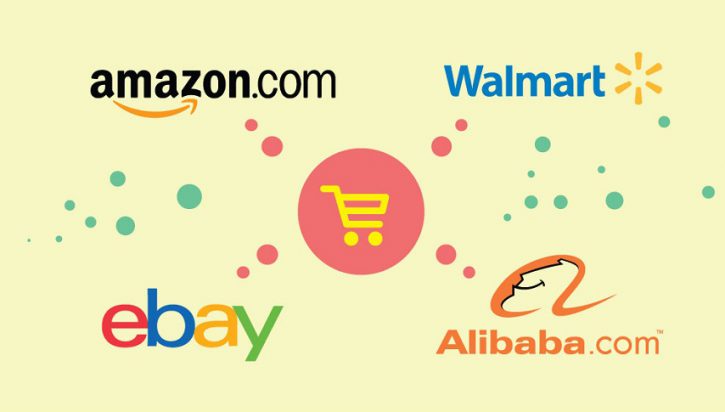An excellent way to enter the world of entrepreneurship is to launch a dropshipping company. You’ll be able to market your own brand, set your own product prices, and sell goods to clients. Inventory is not even required to be paid for until it is sold to a real consumer. You can create a successful brand if you’re willing to put in the effort.
And if you’re still debating whether to launch your online business, then knowing that e-commerce sales will reach roughly 5.2 trillion dollars globally in 2022 would be helpful. So, if worldwide e-commerce statistics are any guide, setting up an online business is currently a very profitable choice.
A company can sell products using the dropshipping business model without ever keeping an inventory of them. After a customer puts an order, the business notifies the product’s manufacturer or distributor that the order has been received and should be included in the customer’s shipment. On behalf of the dropshipping company, the manufacturer or distributor ships the product directly to the customer.
Ordering is straightforward: the customer pays the dropshipper. The manufacturer or distributor is compensated by the dropshipper. The product is delivered to the customer by the manufacturer or distributor. The dropshipper is essentially a marketer.
Dropshipping is a cost-effective method for start-up business owners to sell products without a lot of overhead because no inventory is required. Additionally, it avoids being trapped with unsold inventory.
Here are the first six stages to starting a dropshipping company:
1. Choose a Business Concept
A business concept describes what you are selling and to whom. Because there are so many options with dropshipping, you want to start with a limited number of products that you feel will sell to a specific demographic.
For example, you might develop a business concept that says you’re going to sell graphic T-shirts to skateboarders. The T-shirts will have specific designs that appeal to this demographic and be of the quality and style that skateboarders wear.
The concept is the foundation for the products you sell, your website’s design and your marketing, so spending some time on this is crucial. However, it is good to note that because there are limited costs to implementing a dropshipping product line, you can change things up if you feel that you made a mistake or your product passion changes.
2. Source Products
A business concept doesn’t guarantee that you’ll be able to get the products to serve your demographic. Take the time before you develop a website to research products. Look for multiple distributors that sell the same products to find the best wholesale price of the product.
Some of the most popular marketplaces are:
- AliExpress
- SaleHoo
- Worldwide Brands
- Doba
- Megagoods
- Wholesale Central
You might also search for print-on-demand apparel, home goods or books. Print-on-demand apparel companies print a custom graphic onto various brands and styles of clothing, including T-shirts, socks and jackets.
Choose a product that you get excited about, has a good margin for profit and displays nicely in the images shown on the website. Many of these suppliers also provide statistics of popular items so that you can choose things that are more likely to sell because there is already a market for them.
3. Select Suppliers
Once you find the products you want to offer, it’s time to choose the supplier that will be the actual company to ship the products to your customers. There are a few things to consider with the supplier you choose:
- Quality: Choose a supplier that offers the quality you want your company to represent. One business model is to charge more for better quality products. This is in contrast to being a discount provider of goods that might not be the best quality. How do you want to position yourself?
- Profitability: You should be able to make a reasonable profit on the product. Consider shipping and transaction costs in your calculation. Most dropshippers look to get 15% to 20% in profit margins. Of course, if you can generate higher profit margins, that’s great.
- Reliability: You want to choose a supplier that sends products in a timely fashion with reasonable shipping expenses and times. Many suppliers are overseas, and you’ll have to determine whether or not you want your customers waiting for products. You also need to have a supplier that keeps a product in stock since it is frustrating for you and your customer to have an order that can’t be filled. The best way to check for reliability is to order a few products from the supplier and note the process.
- Return policy: When possible, find a supplier that offers a return policy. Many don’t, so you need to check on this before making any final decisions. You need to think about how you state your own return policies based on what the supplier offers.
Most dropshippers use online marketplaces because they tend to have a better inventory of products with reliable suppliers. It is possible to get a direct source supplier if you have a specific product in mind. This requires some extra work to see who is distributing the product for the manufacturer and often requires a minimum number of sales per month to be eligible.
4. Build an Online Store
You’ll need to build an e-commerce store to sell your products. An e-commerce store is a site that is designed to help you display the products for sale in a pleasing way while possessing the shopping carts necessary to run the purchase transactions.
Read Also: How do I Increase Traffic to my E-commerce Site?
Building the store can be tricky for a newbie. The reason is there are a few moving parts.
To build a website you will need:
- A content management system – (CMS), such as WordPress, Shopify or Squarespace
- A domain name
- Web hosting (if using WordPress)
- Integrations with your chosen dropshippers
- A built-in payment gateway to accept online payments
The best e-commerce websites automate the sale of the product with the order to the supplier. If this step is not automated, you’ll be manually entering in orders every day, which can be cumbersome and lead to errors. Shopify is one of the leading choices for those building a dropshipping business. However, it’s not the only option available so it’s worth learning more about the best e-commerce platforms.
Additionally, you may also want to consider selling your products through other platforms, such as Etsy, Amazon or even social media (i.e., Facebook or Instagram). Multi-channel selling helps your business gain exposure and drive more sales, so it’s generally advisable to do so. That is, if you have the bandwidth to manage multiple selling channels.
5. Register Your Business
You need to set up the company as a business, separating it from your personal assets. This means creating a name (usually the domain name you choose) and filing for an LLC or corporation with your secretary of state.
You’ll get a tax identification number (TIN) from the IRS after successfully submitting your online application. Use this TIN to open a bank account that is linked to your payment gateway. This bank account will take in all deposits and pay the company’s expenses, including web hosting and maintenance. It will also be the account that pays the supplier for the product when ordered.
You should also get a sales tax ID, or reseller’s permit, from the state tax office. Most states require you to pay sales tax on goods sold. You may also need to pay sales taxes in the states where you sell your products.
6. Market Your Business
You can’t just set up a website and expect thousands of people to find it. You need to market the new business. Because it is online, you will likely go beyond the word-of-mouth marketing that you’d do with other businesses in your community.
Join social media groups that are relevant to your business and start participating in a productive way. Don’t just try to sell; help people with questions that they may ask. Become an expert in the community to be seen as a resource. People will find your business through this. Have specific business pages on Facebook, Instagram, TikTok and other social media platforms. Post regularly about new products, sales or tips and tricks in your focus industry.
On top of your social media efforts, you may want to invest in actual ads and sales. You can run Facebook Ads on small budgets that target specific demographics. Think about starting an ad campaign with a $10 per day budget to drive traffic to your e-commerce store. You can also write a blog that helps consumers find you through search engine optimization (SEO) tactics. For many new e-commerce stores, doing a little bit of each of these marketing strategies is the key to getting enough eyes on their store to convert to buyers.


